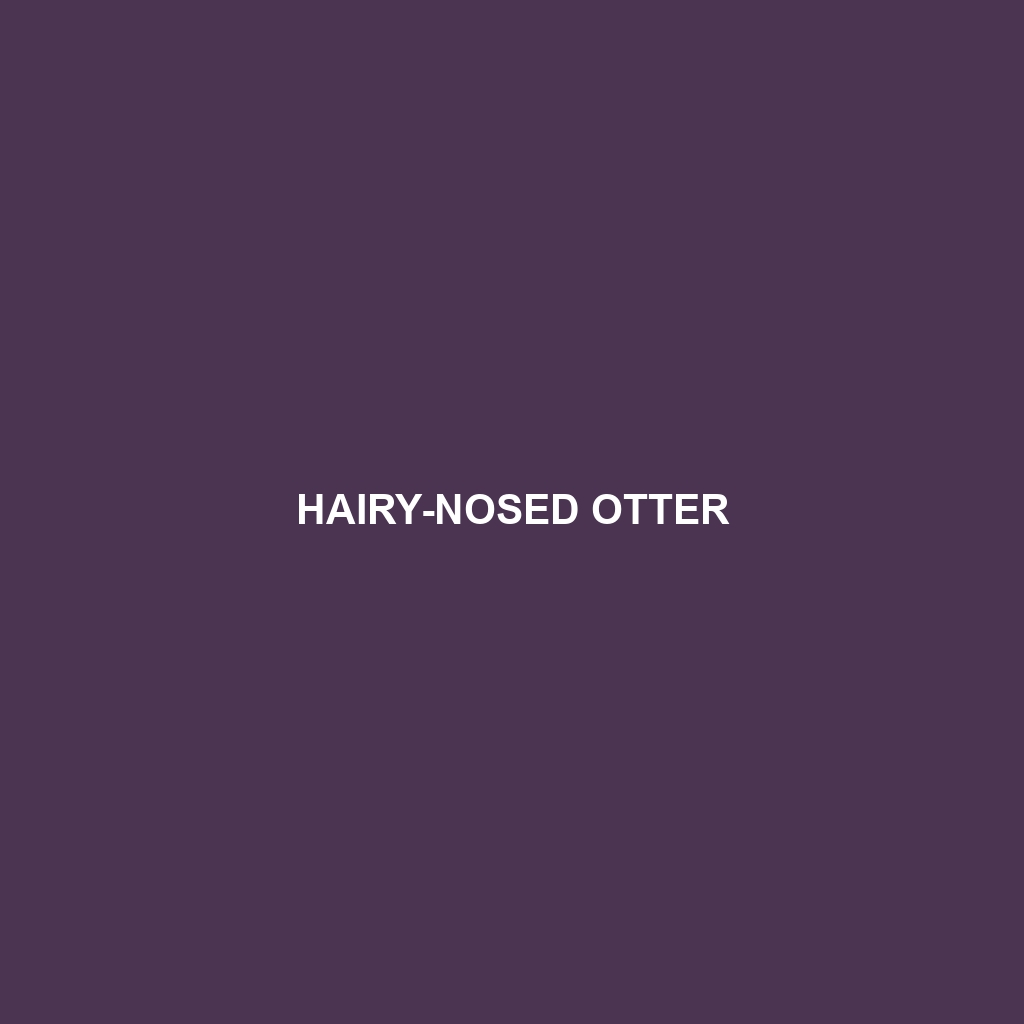Smooth-coated Otter
Common Name: Smooth-coated Otter
Scientific Name: Lutrogale perspicillata
Habitat
The Smooth-coated Otter is primarily found in freshwater habitats throughout the Indian subcontinent and Southeast Asia. This species thrives in rivers, lakes, marshes, and coastal areas, where they prefer environments with abundant vegetation and clean water. They are commonly located in regions of India, Bangladesh, Nepal, Myanmar, and Thailand. Smooth-coated Otters often construct dens in banks, offering them shelter and protection from predators.
Physical Characteristics
Adult Smooth-coated Otters typically weigh between 8 to 10 kg (17 to 22 lbs) and measure approximately 70 to 100 cm (28 to 39 inches) in length, including their long, muscular tails. Their fur is dense and smooth, exhibiting a rich chocolate-brown color on the back and a lighter, creamier shade on the belly. Notable features include a flattened head, short legs with webbed paws, and a strong, streamlined body, all of which contribute to their exceptional swimming capabilities.
Behavior
Smooth-coated Otters are highly social animals, often living in family groups of up to 20 individuals. They are known for their playful behavior, frequently engaging in activities such as sliding down mudbanks or playing with each other in the water. Their vocalizations include a range of sounds, helping them communicate within their groups. They are predominantly diurnal, being most active during the day, which maximizes their foraging opportunities.
Diet
The diet of the Smooth-coated Otter mainly consists of fish, amphibians, and crustaceans. They are skilled hunters and often work in teams to catch larger prey, demonstrating cooperative hunting techniques that enhance their feeding efficiency. In addition to fish, they may also eat small mammals and birds, showcasing their adaptability in various aquatic environments.
Reproduction
Breeding in Smooth-coated Otters typically occurs between November and March, with females giving birth to a litter of 2 to 5 pups after a gestation period of 60 to 70 days. The pups are born blind and rely on their mother for nourishment and protection during the initial months. As they grow, they begin to explore their surroundings and learn essential hunting skills from their parents.
Conservation Status
The Smooth-coated Otter is currently listed as Vulnerable on the IUCN Red List due to habitat destruction, pollution, and hunting pressures. Conservation efforts are crucial to ensure the survival of this species in their natural habitats, promoting awareness and protection of wetland ecosystems.
Interesting Facts
One fascinating aspect of the Smooth-coated Otter is their use of tools; they have been observed using stones to crack open shellfish. Additionally, they are known for their strong social bonds, often displaying affectionate behaviors such as grooming and nuzzling each other.
Role in Ecosystem
As apex predators, Smooth-coated Otters play a vital role in maintaining the balance of aquatic ecosystems. By controlling fish populations, they help sustain the health of their habitats, ensuring that resources remain plentiful for other species. Their presence is an indicator of a healthy environment, highlighting the importance of preserving their natural ecosystems.
